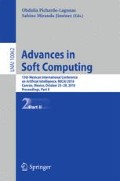Abstract
Since the first publication, side channel leakage has been widely used for the purposes of extracting secret information, such as cryptographic keys, from embedded devices. However, in a few instances it has been utilised for extracting other information about the internal state of a computing device. In this paper, we show how to create a robust instruction-level side channel leakage profile of an embedded processor. Using the profile we show how to extract executed instructions from the device’s leakage with good accuracy. In addition, we provide a comparison between several performance and recognition enhancement tools.
Access this chapter
Tax calculation will be finalised at checkout
Purchases are for personal use only
References
Novak, R.: Side-channel attack on substitution blocks. In: Zhou, J., Yung, M., Han, Y. (eds.) ACNS 2003. LNCS, vol. 2846, pp. 307–318. Springer, Heidelberg (2003). doi:10.1007/978-3-540-45203-4_24
Clavier, C.: Side channel analysis for reverse engineering (SCARE) -an improved attack against a secret A3/A8 GSM algorithm. In: 2004 IACR Cryptology ePrint Archive, vol. 49 (2004)
Réal, D., Dubois, V., Guilloux, A.-M., Valette, F., Drissi, M.: SCARE of an unknown hardware feistel implementation. In: Grimaud, G., Standaert, F.-X. (eds.) CARDIS 2008. LNCS, vol. 5189, pp. 218–227. Springer, Heidelberg (2008). doi:10.1007/978-3-540-85893-5_16
Rivain, M., Roche, T.: SCARE of secret ciphers with SPN structures. In: Sako, K., Sarkar, P. (eds.) ASIACRYPT 2013. LNCS, vol. 8269, pp. 526–544. Springer, Heidelberg (2013). doi:10.1007/978-3-642-42033-7_27
Clavier, C., Isorez, Q., Wurcker, A.: Complete SCARE of AES-like block ciphers by chosen plaintext collision power analysis. In: Paul, G., Vaudenay, S. (eds.) INDOCRYPT 2013. LNCS, vol. 8250, pp. 116–135. Springer, Cham (2013). doi:10.1007/978-3-319-03515-4_8
Quisquater, J.-J., Samyde, D.: Electromagnetic analysis (EMA): measures and counter-measures for smart cards. In: Attali, I., Jensen, T. (eds.) E-smart 2001. LNCS, vol. 2140, pp. 200–210. Springer, Heidelberg (2001). doi:10.1007/3-540-45418-7_17
Goldack, M.: Side-channel based reverse engineering for microcontrollers. Diploma Thesis, Ruhr-University Bochum (2008). https://www.emsec.rub.de/media/attachments/files/2012/10/da_goldack.pdf
Eisenbarth, T., Kasper, T., Moradi, A., Paar, C., Salmasizadeh, M., Shalmani, M.T.M.: on the power of power analysis in the real world: a complete break of the KeeLoq code hopping scheme. In: Wagner, D. (ed.) CRYPTO 2008. LNCS, vol. 5157, pp. 203–220. Springer, Heidelberg (2008). doi:10.1007/978-3-540-85174-5_12
Msgna, M., Markantonakis, K., Mayes, K.: Precise instruction-level side channel profiling of embedded processors. In: Huang, X., Zhou, J. (eds.) ISPEC 2014. LNCS, vol. 8434, pp. 129–143. Springer, Cham (2014). doi:10.1007/978-3-319-06320-1_11
Standaert, F.-X., Archambeau, C.: Using subspace-based template attacks to compare and combine power and electromagnetic information leakages. In: Oswald, E., Rohatgi, P. (eds.) CHES 2008. LNCS, vol. 5154, pp. 411–425. Springer, Heidelberg (2008)
Bishop, C.M., Nasrabadi, N.M.: Pattern recognition and machine learning. J. Electron. Imaging 16(4), 33–46 (2007)
Bishop, C.M.: Pattern Recognition and Machine Learning (Information Science and Statistics). Springer, New York (2006)
Rechberger, C., Oswald, E.: Practical template attacks. In: Lim, C.H., Yung, M. (eds.) WISA 2004. LNCS, vol. 3325, pp. 440–456. Springer, Heidelberg (2005). doi:10.1007/978-3-540-31815-6_35
Mousa, A., Hamad, A.: Evaluation of the RC4 algorithm for data encryption. IJCSA 3(2), 44–56 (2006)
Author information
Authors and Affiliations
Corresponding author
Editor information
Editors and Affiliations
Rights and permissions
Copyright information
© 2017 Springer International Publishing AG
About this paper
Cite this paper
Tsague, H.D., Twala, B. (2017). A Robust Machine Learning Approach to Microprocessor Instructions Identification. In: Pichardo-Lagunas, O., Miranda-Jiménez, S. (eds) Advances in Soft Computing. MICAI 2016. Lecture Notes in Computer Science(), vol 10062. Springer, Cham. https://doi.org/10.1007/978-3-319-62428-0_21
Download citation
DOI: https://doi.org/10.1007/978-3-319-62428-0_21
Published:
Publisher Name: Springer, Cham
Print ISBN: 978-3-319-62427-3
Online ISBN: 978-3-319-62428-0
eBook Packages: Computer ScienceComputer Science (R0)

